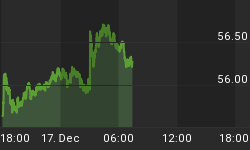This post is an excerpt from a recent TSI commentary.
Intermediate-term rallies in the gold-mining sector can happen during general equity bull markets and general equity bear markets, but on a long-term basis the gold-mining sector trends in the opposite direction to the broad stock market. An implication is that to get a new bull market in gold-mining stocks there will probably have to be a new broad-based equity bear market.
A good argument could be made that an equity bear market got underway last July, but at this stage the vast majority of market participants still believe that the bull market is intact. In general, people are very nervous about the short-term while remaining optimistic about the stock market's long-term prospects. What would shake the long-term optimism of a critical mass of investors?
Based on what happened in 2000, an SPX break below the August-2015 low that was not quickly reversed would probably do it. This is the point we are trying to make with the following chart comparison. The chart compares the HUI and the SPX during the 12-month period beginning March-2000, or the 12-month period commencing just prior to the start of a cyclical stock-market decline.
Notice that the SPX bear market began with a sharp decline from a March high to an April low, after which there was a 4-5 month period of choppy trading that resulted in a test of the March high. At the time the March high was being tested hardly anyone believed that a bear market was underway. The market then began to trend downward and in October the SPX traded below its April low, but the downside breakout was quickly negated and there was a collective sigh of relief. It was still apparent to almost all market participants that they were dealing with a bull-market correction. Then, in November, the SPX again breached its April low and the breakout was not quickly negated. This was the point of recognition -- the point when a critical mass of investors came to suspect that an equity bear market was in progress. This was also the point when the gold-mining sector commenced a bull market.

One of the reasons that the bear market in the gold-mining sector has been unusually long is that the general equity bull market has been unusually long. The general equity bull market is probably over, but very few people know it yet. Enough people to provoke a major trend change in the gold-mining sector will probably know it after the SPX makes a sustained break below the August-2015 low.















